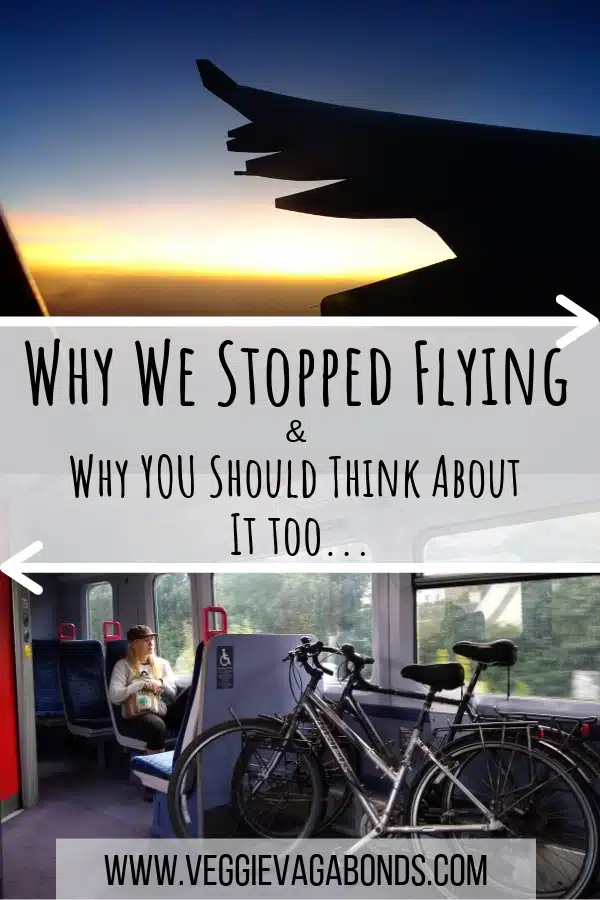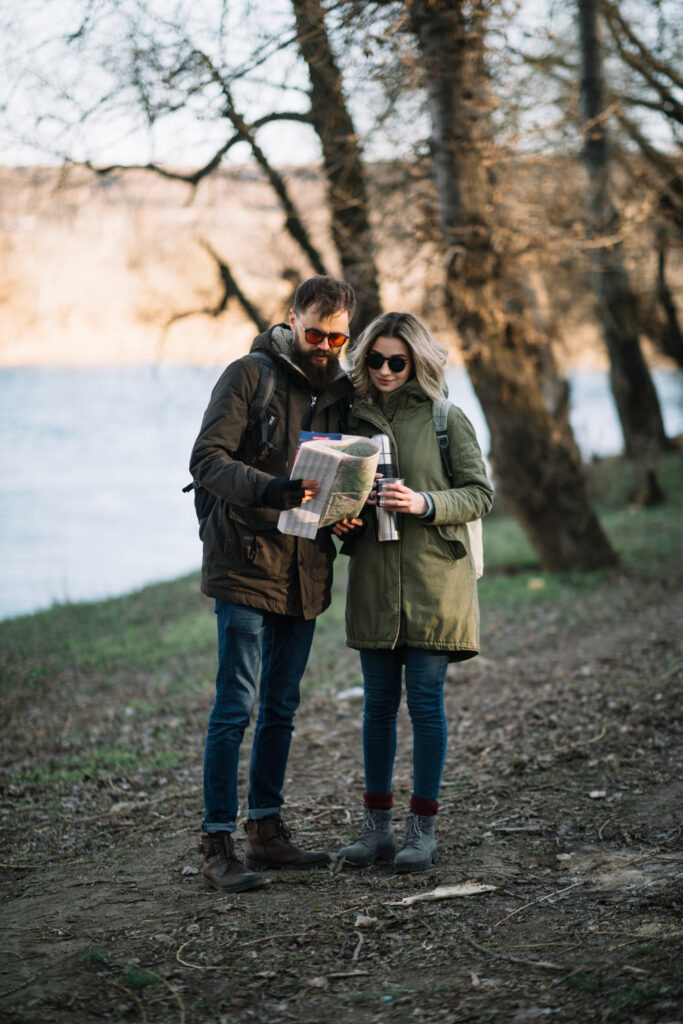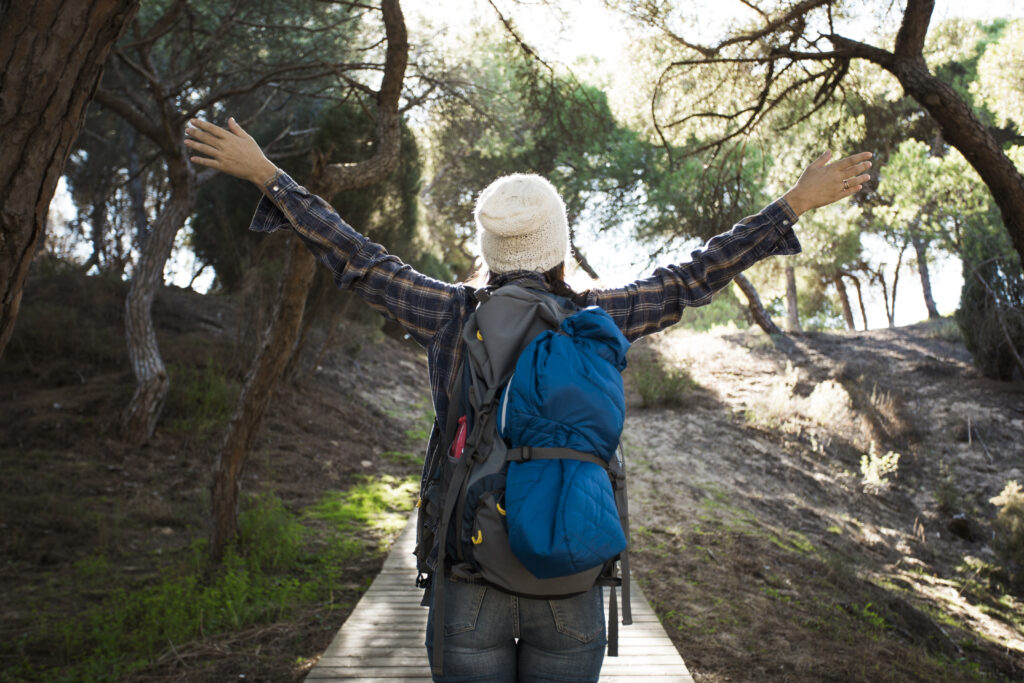Want to know why we decided to stop flying?
‘Can you be a traveller and not fly? How does that work?’
That’s normally the response we get after telling people we committed to stop flying in 2017. Followed by a series of confused questions and puzzled expressions. Because of this, and how often this conversation seems to come up, we thought it would be a good idea to explain exactly why we decided to stop flying. And, also, why you should really think about stopping too…
No, we’re not scared of flying. Nor are we banned from major airlines and airports (yet). Actually we used to love flying and did it an awful lot. Never to an excessive amount but we’ve flown to 5 out of 7 continents, nearly 30 countries and we enjoyed every second of it. For many people, the concept of travelling is about getting on a flight to explore somewhere amazing and that’s exactly how it was for us.
There’s a certain excitement you get from arriving to the airport, then checking in and finally boarding the plane. And this is before the whole crazy process of this marvellous flying machine taking off, flying you for thousands of miles and transporting you to your chosen adventure. This isn’t even including the complimentary drinks you may get (thanks Air India!).
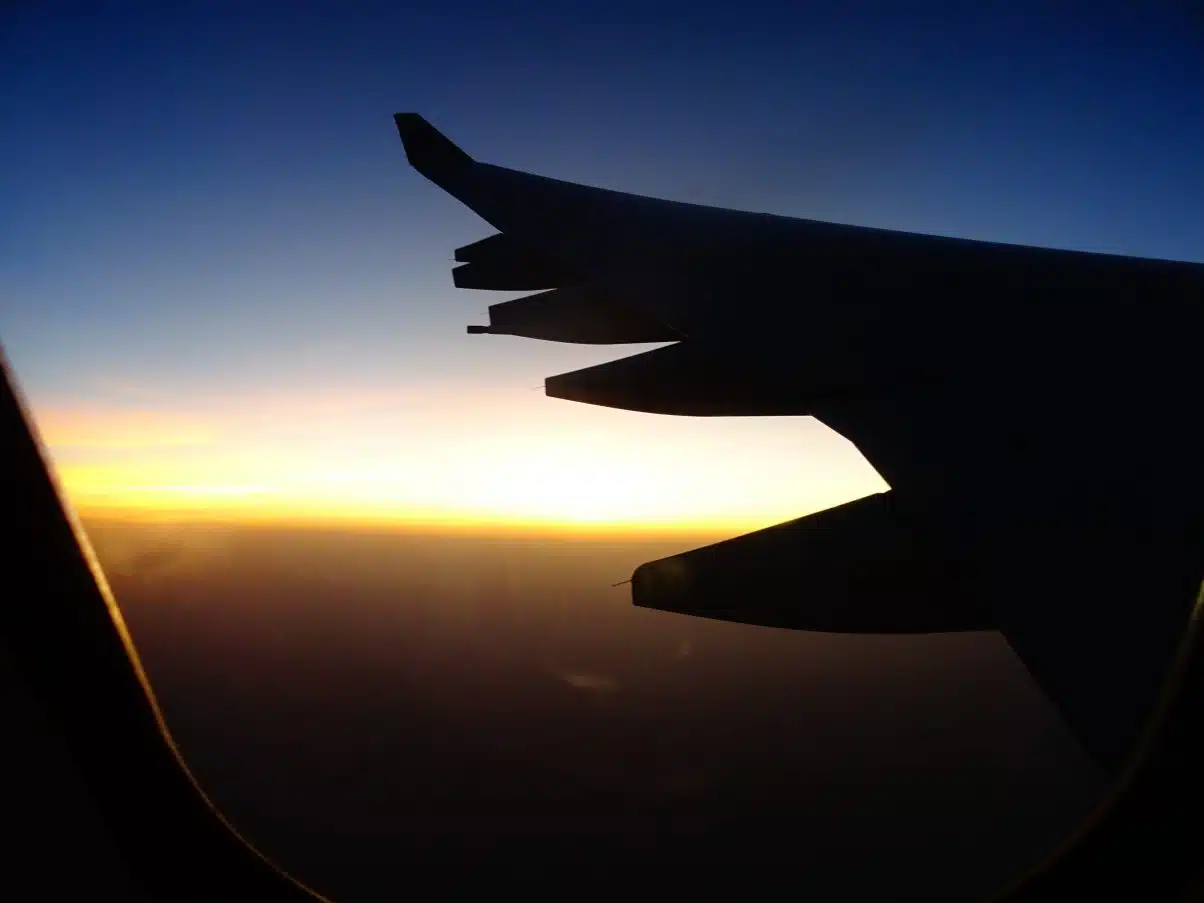
So now you’re probably thinking ‘these guys sound like they’re pretty big fans of flying?’, and in some ways you’re right. Sarah and I live to explore and for a huge portion of our lives, flying was integral to that. We loved it and thought it was symbiotic to world travel. Then in 2017, after a beautiful trip to Portugal, flying to Lisbon and out of Porto, we decided to stop flying for good.
Why did we decide to stop flying?
Did you know that in 2017, at any given time, there were roughly 1,270,406 people in the air flying? That’s not in the space of a day, that’s the average amount at one single point. To transport this many people takes nearly 10,000 planes. 10,000 commercial planes all in the air at the same time, at any given point.
The International Civil Aviation Organization estimated there were 3.5 billion (yes BILLION) plane passengers in 2015 and according to the website at London Heathrow, there were 78 million passengers in 2017 alone.
With the rise of budget airlines like Easy Jet and Air Asia, who’s motto is ‘now everyone can fly’, this number is only increasing. The International Air Transport Association expects 7.8 billion passengers to travel in 2036, nearly doubling the 4 billion expected to fly in 2019. Can you see where I’m going with this?
Basically there’s a lot of bloody people flying and it’s only going to increase. You may think these statistics are being pulled from sensationalist magazines or unreliable sources but they’re not. They’re actually from the big dogs of the flying community, government statistics and aviation organisations.
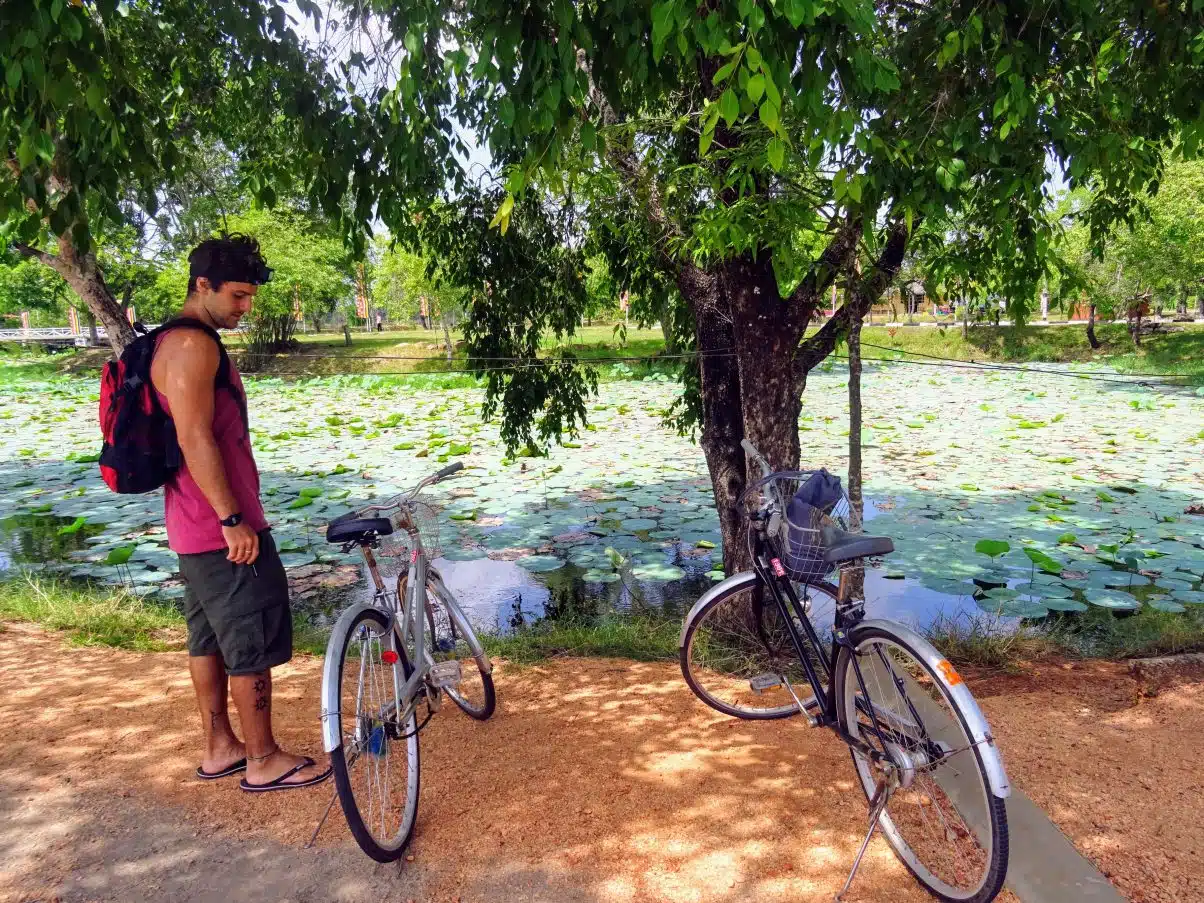
So there’s a lot of people flying, what’s the problem with that? What makes flying so bad for the environment?
1 – Planes are super fuel hungry
These ‘marvellous’ flying machines consume fuel like there’s no tomorrow. A Boeing 747 will use more than 4 litres of fuel a second. Quite hard to comprehend how much that is, but it equates to 94 billion gallons of fuel being used from commercial airlines each year. That’s enough to fill nearly 150,000 swimming pools. Remember fuel is predominately made from oil, that non-renewable resource we are running out of at an alarming rate and is extracted at great cost to our environment…
2 – The carbon footprint of flying is through the roof, not to mention the greenhouse gases & air pollution
Flying produces an inconceivable amount of C02 emissions and air pollution. For those that don’t know, CO2 (carbon dioxide) is one of the key greenhouse gases that contribute to global warming – flying produces a whole lot of it.
Want a pretty shocking statistic? One return flight from Germany to the Caribbean creates more CO2 than all the emissions from 80 inhabitants of Tanzania in the space of a year (4,000 kg CO2).
Want another reason to stop flying? For your average person, a return flight from the UK to Australia would use about 5.5 tonnes of CO2. When you think that your average British person used 7.1 tonnes of CO2 in all of 2013 you can see something is wrong. And, 7.1 tonnes of CO2 a year is already over what is considered a ‘sustainable amount’, governments are working to bring this down to 2 tonnes. So, clearly, something has to change.
Carbon aside, planes also produce large quantities of nitrogen, water vapour and soot which at high volumes are pretty crappy in their own right. Altogether, this is a huge driving force towards global warming, climate change and pollution of the air we breathe.
Sir David Attenborough: ‘I don’t think people should fly just for the hell of it’

3 – It’s not getting any greener
Unlike other forms of energy, it’s not easy to make flying more sustainable and it’s not moving in that direction either.
Decisions are only made to create the biggest profit margins and this doesn’t look in favour of the environment. So long as flight companies are still making the big bucks from burning dirty old oil in the skies, it’s unlikely they’ll move to more sustainable options. Have you heard of the plans to make commercial planes electric, solar or renewable-energy-powered? No, neither have we.
4 – Flying is a much bigger polluter than other transport options
According to the WWF: transport contributes to more than 43% of your environmental footprint, so it really is a huge factor.
Flying from London to Paris generates 244 kg of CO2 whereas taking the Eurostar train will create 90% less with only 24 kg. Bus and coach travel are also dramatically more sustainable than flying.
Slightly closer is plane pollution vs car pollution but cars still come out more favourably. Even single-passenger cars are more environmentally friendly than flying short journeys and once you have the other seats filled you’ll produce 5x less carbon individually than boarding a flight.
To top this all off, the CO2 produced at a higher altitude has a worse impact than at ground level. This means, for example, that 50 kg of CO2 produced from planes in the sky has a much bigger environmental impact than from car exhausts on ground level.

5 – Airports are huge and pretty horrible
Besides the pollution caused by planes, the airports themselves are huge and a bloody eyesore. Interestingly, planning permission always seems to be approved for new runways and expansions, regardless of the environmental implications and impact on local air quality levels.
6 – Flying is terrible for wildlife
Every year hundreds of thousands of birds and animals are killed and disrupted by planes. Natural environments are also hugely disrupted by the noise and light pollution from the aviation industry and the development of airports.
7 – Most people don’t realise how bad air travel is for the environment
People know about fossil fuels, greenhouse gases and global warming. Unfortunately, a lot of people don’t seem to realise that flying is a huge contributor too.
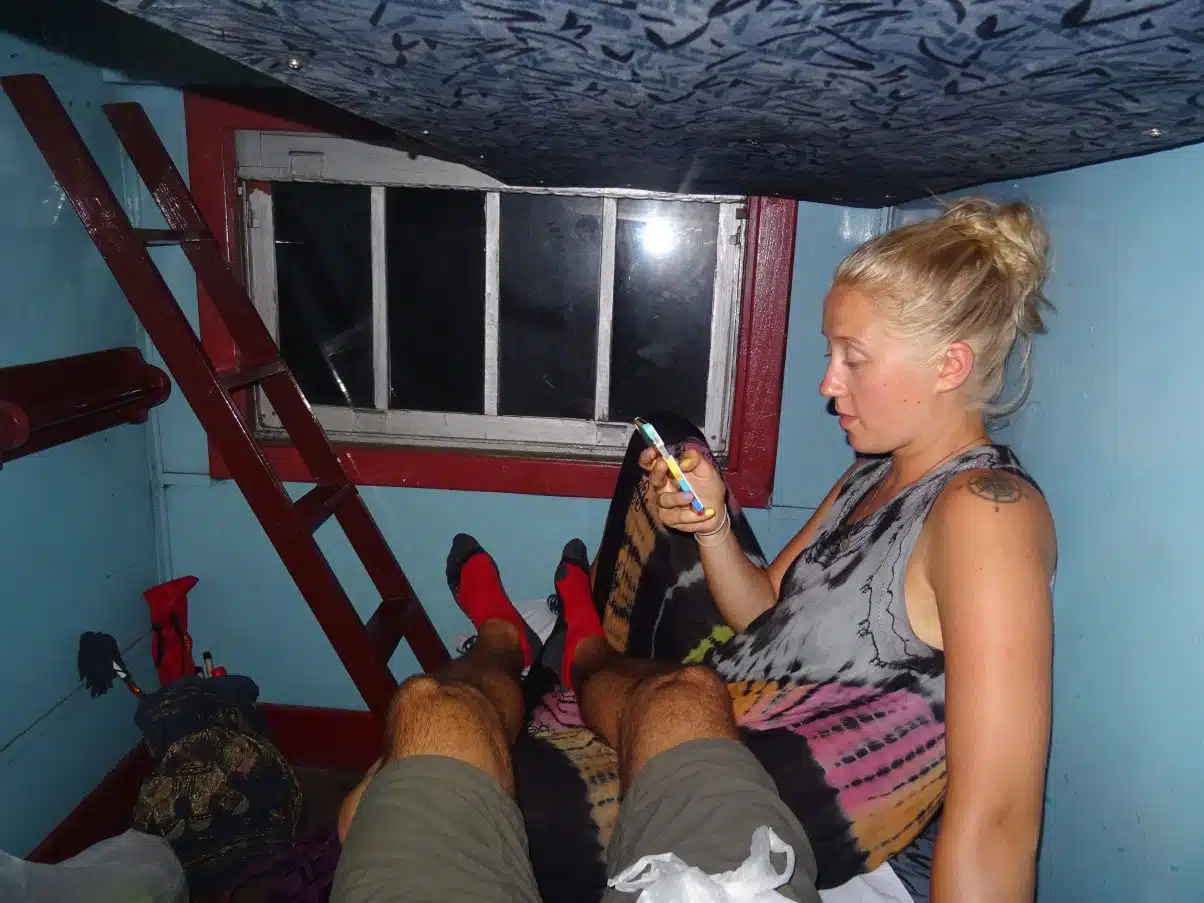
So why is everyone still flying?
In short: to save time and money.
I’ll be honest with you though: it can be quite a lot of time and money.
At the time of writing this (12.02 pm, 14/1/18) you can fly from London Luton to Glasgow, leaving at 13.45, taking 1 hour 15 minutes and costing £50. If you want to get the train from London (Euston) to Glasgow Central it’s going to take between 4 and 6 hours and cost a whopping £146. England is an extreme example as rail prices are sky high and flight prices are cheap, but still, it does make it difficult for your everyday person to make the ethical choice.
Increasingly, people are starting to think ‘hey, should I stop flying?’ but it’s the prices that put people off. This means, governments, you gotta sort it out! Start making it more feasible for people to move towards a greener future!
Can you put a price on our natural world?
For us, no matter how much time or money you can save, it isn’t worth it.
Without going into full tree-hugging, eco-warrior mode, we all have a responsibility to move towards more sustainable lifestyles. For us and many other people, it’s the natural world that brightens our day and inspires travel and exploration. Besides this, we all need the natural world to live a healthy life, so why not help protect it?
There are a lot of ways to lead a greener lifestyle: going vegan, recycling and cutting down on plastic, careful shopping etc. These all obvious ones that people seem much happier to adopt. Stopping flying, or at least cutting down, is another huge aspect people need to consider.
For some time, we knew that constant air travel wasn’t a good choice but out of convenience chose to brush it under the rug. But, after years of seeing environments and habitats destroyed by pollution, it finally hit home – time to prioritise the environment over convenience. That was it, in October 2017 we committed to stop flying but were adamant it wouldn’t stop our adventures.
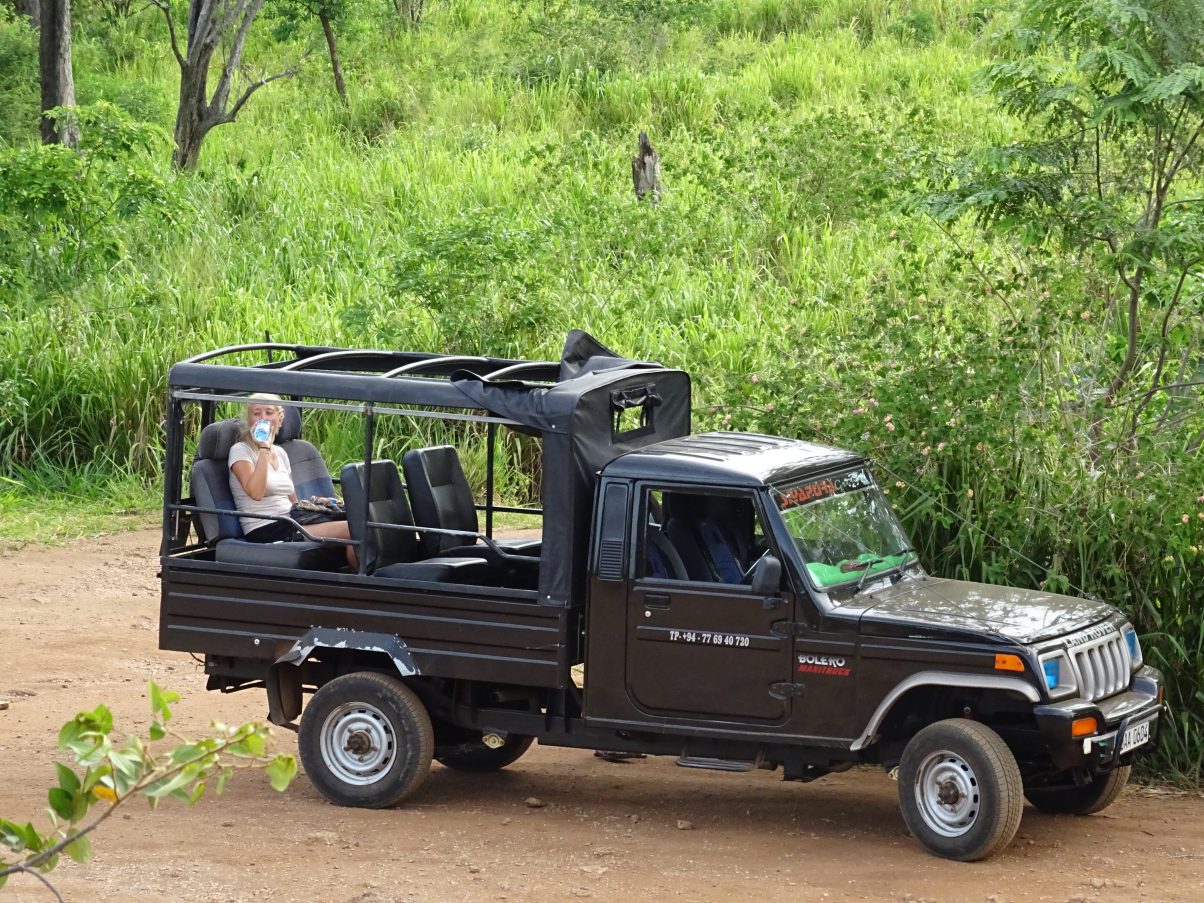
Some things we learned from flightless travel
Besides the obvious fact that you’re taking a huge step in protecting the natural world, there are some other things we found out…
1 – Overland travel is more rewarding than flying could ever be
If you fly you miss out on so many experiences between airports – this doesn’t happen overlanding. Travelling slowly and at smaller distances is the best way to take in a location and watch as cultures change from place to place.
It also helps you remember that travelling is not just about destinations. This way the adventure starts as soon as you leave your front door.
2 – Travelling the world without flying is seriously possible
Graham Hughes travelled to every country in the world without flying, Paul Theroux got trains around the world, Tom Turcich walked around the world and Mark Beaumont cycled around the world in less than 80 days! There are so many incredible opportunities and possibilities, you just have to think outside the box.
3 – You’ll have much better stories to tell
Which story would you prefer to tell?
A) ‘We got a flight from London to Morocco.’
B) ‘We hitchhiked from London to Dover and got a ferry to Calais. From Calais, we spent a week travelling through the French wine country before some overlanders in a van gave us a lift through the Pyrenees into Spain. In Spain, we hiked through the northern mountains, travelled to Seville, learned some salsa, hitchhiked to Gibraltar and then got a ferry to Morocco.’
If you went with A then this is probably not the blog for you.
4 – It’s the best excuse to get active and challenge yourself
Since deciding to stop flying we’ve wholeheartedly embraced cycling, hiking and hitchhiking as transport options. It inspired us to challenge ourselves and complete the UK Three Peaks Challenge by Bike and raise £1,200 for charity in the process.
You can choose to get from A to B in the easiest overland option (buses, trains) or turn a small trip into a real adventure by trying different methods of transport. Could you travel by kayak? How about skateboarding?
5 – You can really discover your local surroundings
Yes, if you only have a weekend free it’s unlikely you’ll be able to cross continents, but do you need to?
Since 2017 we’ve made a big effort to explore our local surroundings and it’s been an awesome choice. No matter where you are you’ll be able to find new destinations, closer to home, that take your breath away. It’ll give you a newfound appreciation for the world outside your front door and help support the local economy.
6 – The warm feeling of knowing you’re actions are helping to protect this beautiful planet
Pretty self explanatory.
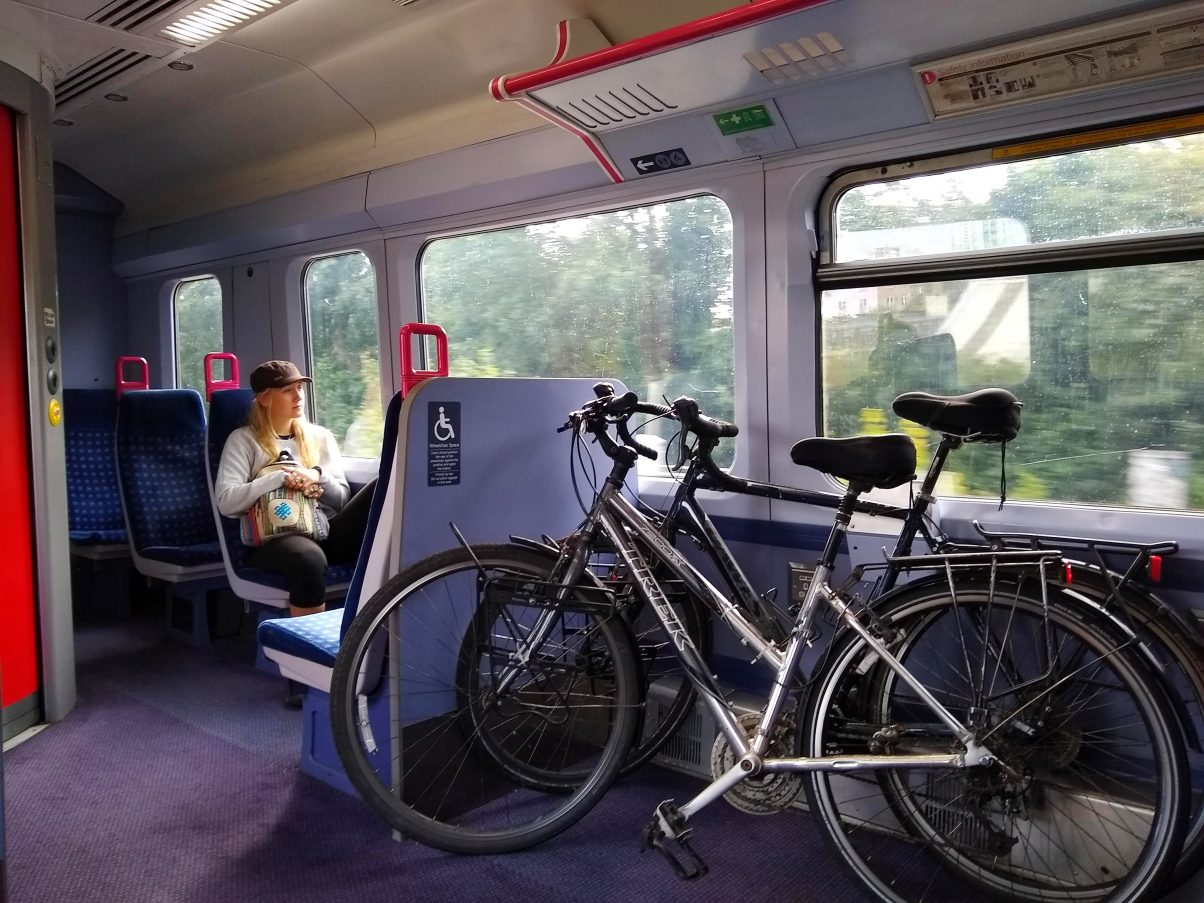
Should we stop flying completely? Straight away!?!?
It may not be possible for everyone to stop flying straight away. If you have family on the other side of the world, or a job that requires travel, it might be more complicated. We’d suggest slowly making your flying habits more sustainable with this guide and gradually picking up tips on how to stop flying bit by bit.
Is it wrong to fly? Not inherently, but, no matter how you phrase it or how ethically you travel once you arrive at a destination, flying is BAD for the environment. The thought of a damaged tanker spewing oil into the ocean would shock most people but effectively planes are doing the same in the air.
We all need to start making more sustainable choices. For some. flying may be more practical than others, but it’s something we should all consider. Let’s remember, flying every year for international holidays is not a necessity. It’s a privilege and a choice. When there’s a whole world of adventures outside your front door, why don’t we reimagine travel and explore more creative options?
It’s also real important to note, all this flight shaming and flygskam doesn’t seem like the right approach.
If there’s anything we’ve learned from 5+ years being vegan, it’s that people need to make the decision on their own. Trying to force an opinion down someone’s throat or shaming them for their actions is the wrong mentality. The evidence is there, and, with the disasters of global warming becoming more apparent, the best thing we can do is create positive dialogue and lead by example.
One serious flight-less adventure is on the horizon
When I said Sarah and I like an adventure I wasn’t joking – once we set our mind to something we don’t let it drop. Since we were teens it’s been a dream to explore India and now we’ve decided to stop flying we still want to go. So, we’re going to cycle.
At the end of February this year we will be leaving on an overland expedition from England to India with two bikes and a set of panniers. Our plan is to prove that you can explore the world in a sustainable way and explore the possibilities of human-powered adventures.
Why We Decided to Stop Flying & Why You Should Think About it Too
On writing this, in reflection, I’m very happy to have committed to stop flying. It really is something that has a catastrophic impact on the environment and in most cases, we don’t need to do it.
I hope that in reading this you’ll also consider whether you too could take the overland route. Maybe not 100% straight away, but slow and gradual steps in the right direction. It all makes a difference!
Have some thoughts about this article or also trying to cut down flying? Tell us in the comments below!
Keep exploring…
Ways YOU can make flying more sustainable

